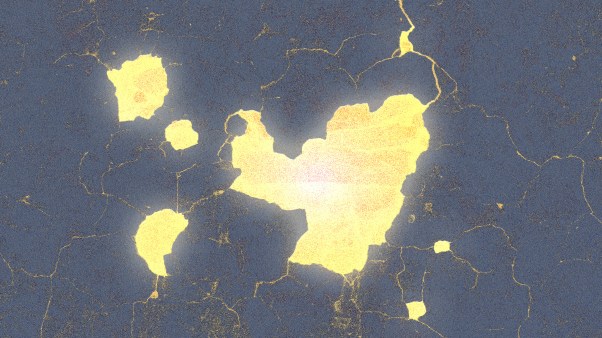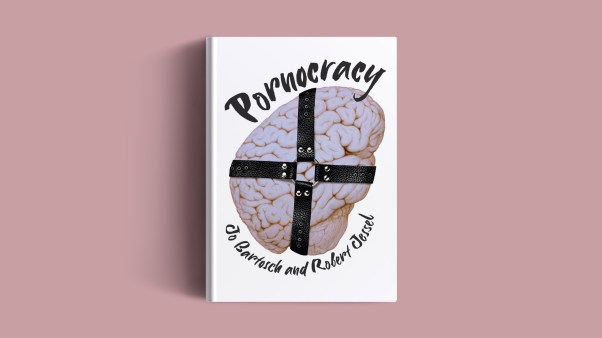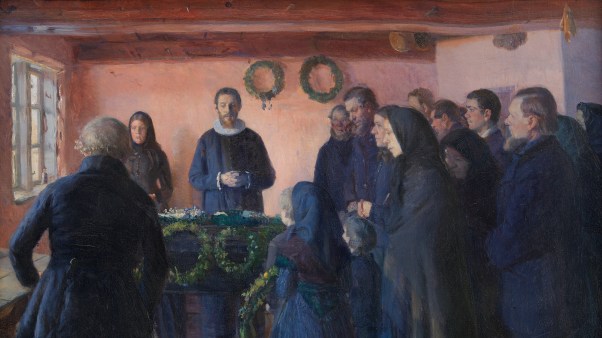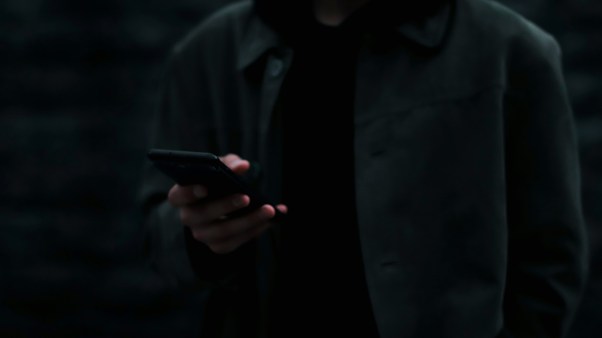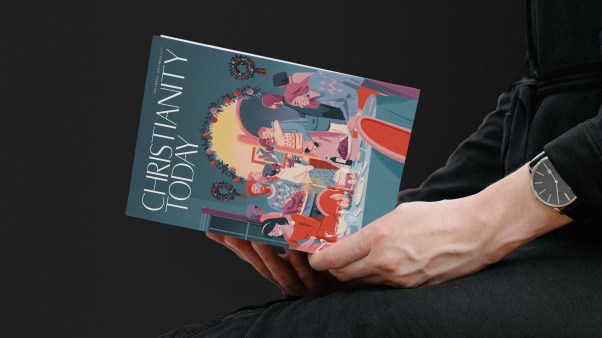Within the fixed positions and steps of classical ballet, many of its finest practitioners found freedom—from their own flawed bodies, from repressive regimes, from turmoils, public and private. Marie Taglioni, the beloved 19th-century ballerina, practiced relentlessly, acquiring such mastery over her own movement that she became beautiful onstage despite her unlovely face and figure. Her daily six-hour workouts included, among other feats, holding poses while counting to one hundred. A century later, Galina Ulanova, an upstanding Soviet citizen and cultural ambassador, still managed to be an artist first through her poignant renditions of socialist-sanctioned roles. Jennifer Homans highlights these two compelling performers, among many others, in Apollo’s Angels: A History of Ballet, her sweeping account of how revolutions, upheavals, nationalities, and personalities have shaped a highly ordered art form over four centuries.
Homans danced professionally for a time, and if she danced as well as she writes, she must have been very good. We already knew, for example, that Anna Pavlova was important, but Homans tells us why, and does so superbly. Like Taglioni, Pavlova—skinny and frail—seemed physically unsuited to ballet. Her liabilities became assets, we learn, because her “tremulous, fragile” style looked “spontaneous and elusive, as if painted from nature—like Impressionism applied to dance.” Moreover, Pavlova’s legendary performances as the Dying Swan gave rise to the new naturalistic manner of dancing championed by the Swan’s choreographer, Mikhail Fokine. “[Pavlova] skimmed the floor on pointe or stepped through an arabesque, bending deeply at the waist or through the back, arms fluid but broken-winged,” Homans writes. “The power of the dance lay uniquely in the expressive quality of her movements and in the way she showed the expiring life force, the draining of energy and spirit from a creature of great strength and beauty …. As Pavlova slowly weakened, gave in, and folded into a gentle heap, the old ballet, it seemed, died with her.”
While Homans the dancer turns particular ballets inside out, deconstructing, point by point, Homans the scholar (she earned a PhD in modern European history) surveys them from a distance, with the larger world as their backdrop: the societal forces—political, economic, literary—that impacted each piece. The Loves of Mars and Venus (1717), for example, premiered at a “very particular and dynamic historical moment” in London, when aristocrats and commoners met together in coffeehouses for lively debates, while new translations of The Iliad (Alexander Pope’s in particular) reflected a burgeoning interest in the classics. English ballet master John Weaver believed that he and his colleagues “were uniquely poised to cut a path between the senseless and immoral displays of the French and the raucous tricks of the Italians …. They could have their own—distinctly English and very polite—kind of ballet.” Weaver responded with Mars and Venus, a restrained pantomime rooted in Greek and Roman theater that “seemed to achieve the impossible: it was both serious and a box office success.”
But the history of ballet starts much earlier than that, in 1533 to be precise, when a French king married Catherine de Medici from Florence and the aristocratic customs of France and Italy began to entwine. It was under the reign of Louis XIV in the 17th century that ballet evolved into a genuine art form. The milestones follow quickly thereafter, at least in Homans’ narrative: ballet’s five positions are codified by page 23; the first modern corps de ballet coalesces on page 113; and, by page 138, Italian ballerinas are dancing on their toes. Homans ornaments this timeline with anecdotes and bright bits of trivia, describing how the Duke of WÜrttemberg celebrated his birthday with fountains that spouted sparkling red wine, and how opera-goers in 18th-century Milan dined in private salons attached to their boxes, parting the draperies between bites to hear their favorite arias.
Apollo’s Angels is more than just chronology shrouded in context, however, thanks to Homans’ ability to tell stories, large and small. The book is divided into two sections: the first half explores France’s central role in the origins and spread of ballet throughout Western Europe, while the second half focuses on Russia and its dominant influence in the 20th century. Homans explains how ballet is passed down from person to person, and this overarching story of transmission permeates and thematically links the two sections. We learn how Western Europeans such as Enrico Cecchetti and Marius Petipa moved to Russia in the 19th century, influencing a generation of Russian dancers who, in the 20th century, revitalized ballet in Europe and America by touring and opening studios in Paris, London, and New York. “Humanity does not pass through phases as a train passes through stations,” wrote C. S. Lewis in The Allegory of Love. “[B]eing alive, it has the privilege of always moving yet never leaving anything behind. Whatever we have been, in some sort we are still.” Across the centuries, dancers moved from city to city, continent to continent, carrying their heritage with them, in their minds and in their bodies.
At times Homans loses her way in a clutter of details, such as in her discussion of 18th-century Vienna, but for the most part she tells her larger story by compiling charming smaller ones. Particularly delightful is her evocation of 19th-century Copenhagen, where a gawky dance enthusiast named Hans Christian Andersen courted Jenny Lind, while August Bournonville, removed from the tumults roiling other capital cities, developed an unpretentious style of ballet that thrives to this day. He created works that celebrated the Danish experience—trolls, elfin maidens, scenes of warm domesticity—and still found time to write his memoirs, reorganize schools, advocate for dancers, and stroll with Kierkegaard.
The book’s second half is both more and less satisfying than the first, mainly because the history is more familiar, to the author and to us. Homans attended the School of American Ballet, organized in 1933 by Russian émigré George Balanchine, and she obviously reveres him. “Balanchine was a world apart,” she declares, and she is right. In parts of two chapters, collectively titled “The American Century,” she chronicles his rise and extols his genius. But ballet existed in the United States before Balanchine arrived, and Homans might have made “The American Century” chapters a bit more, well, American. Her summary of the native dance scene before World War II spans only four pages. With an additional paragraph, she might have introduced George Washington Smith, America’s first premier danseur, who partnered Austrian starlet Fanny Elssler during her triumphant U.S. tour in the early 1840s. The enterprising Smith eked out a 60-year career in a country without a classical dance tradition, without serious ballet schools, few teachers, and a limited audience. The Elssler-Smith partnership represents an Old World vs. New World dynamic worthy of Homans’ attention. Equally disappointing is her careless treatment of America’s first blockbuster musical, The Black Crook. This extravaganza was first produced in 1866, not by the Hungarian Kiralfy brothers, as she asserts, but by two American promoters, Henry Jarrett and Harry Palmer, who, after a fire destroyed a theater they had secured for an elaborate spectacle, sent the sets, costumes, and ballerinas over to nearby Niblo’s Garden, melded them into a melodrama about an evil sorcerer with a crooked back, and had themselves a hit.
Instead of celebrating these examples of American pluck and self-reliance, Homans seems eager to cast government as the savior. She traces the origins and growth of America’s two leading companies, the American Ballet Theatre and the New York City Ballet, both borne of Russian-American collaborations and personal wealth, insisting that “although both companies depended on private patronage, their real guardian angel—the thing that finally lifted them from the constant threat of bankruptcy—was the U.S. government.” True, perhaps, but even tax-paying balletomanes might object to subsidizing a work such as The Cage, premiered by the New York City Ballet in 1951 and depicting insects that vomited, strangled, slashed throats, and ate each other. This ballet, one of Jerome Robbins’ finest, according to Homans, “ends with a frenzied group feeding and an orgasmic thigh-rubbing satisfaction.” By the book’s epilogue, Homans is openly scornful of one particular donation, complaining that the New York State Theater—”named for the people it served”—has been renamed the David H. Koch Theater “for the millionaire whose ego and resources substitute for the public good.” Hmm.
But back to Balanchine. He and Robbins were colleagues, and, in a sense, foils. Balanchine was adaptable and famously generous, Robbins inflexible and often hostile. Work sustained them both, but Robbins never found complete freedom from his personal demons, even in dance. Balanchine, on the other hand, possessed an inner calm, grounded in his Russian Orthodox faith. “God creates, I assemble,” he would say. While Homans incisively explores the interplay between Balanchine’s faith and art, she does not address the apparent disconnect between his faith and his personal behavior—he had multiple marriages and countless sexual relationships, at least one involving an abortion. Though godlike to his dancers, he was as mortal and sinful as the rest of us.
But he was vastly more talented. This self-identified servant of God dutifully employed his gifts to distill beauty, however momentary. With Apollo’s Angels, Homans gives him and his art a fitting and permanent tribute.
Sharon Skeel is a ballet historian currently at work on a biography of 20th-century American choreographer Catherine Littlefield. She dedicates this essay to the memory of Samuel Hsu (1947-2011).
Copyright © 2012 by the author or Christianity Today/Books & Culture magazine.Click here for reprint information on Books & Culture.




